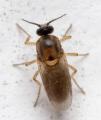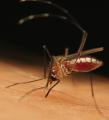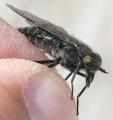Diptera.info :: Identification queries :: Diptera (adults)
|
Phasia ? > Xysta holosericea ? > Opesia cana
|
|
| Manuel Lopez |
Posted on 24-05-2013 08:22
|
|
Member Location: Granada Posts: 2551 Joined: 03.09.11 |
On Papaver flower, Beas de Granada (C Granada, 1380 m. asl). Thanks !! Manuel Lopez attached the following image: 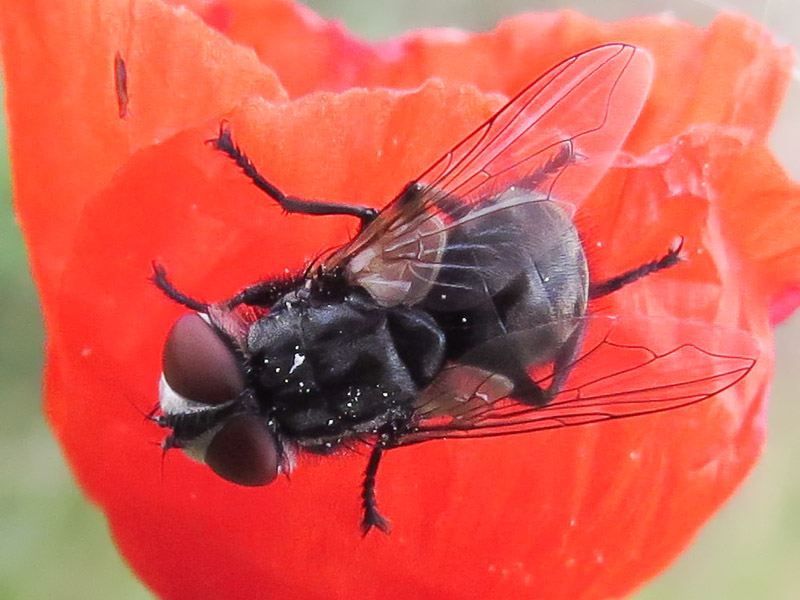 [139.23Kb] Edited by Manuel Lopez on 28-05-2013 20:46 Manuel |
|
|
|
| ChrisR |
Posted on 24-05-2013 13:09
|
|
Super Administrator Location: Reading, England Posts: 7703 Joined: 12.07.04 |
Interesting but not a Phasia (no petiole) and I'm not even sure that it is a tachinid. Do you have more photos?
Manager of the UK Species Inventory in the Angela Marmont Centre for UK Biodiversity at the Natural History Museum, London. |
| Manuel Lopez |
Posted on 24-05-2013 18:53
|
|
Member Location: Granada Posts: 2551 Joined: 03.09.11 |
Only another one very similar
Manuel Lopez attached the following image: 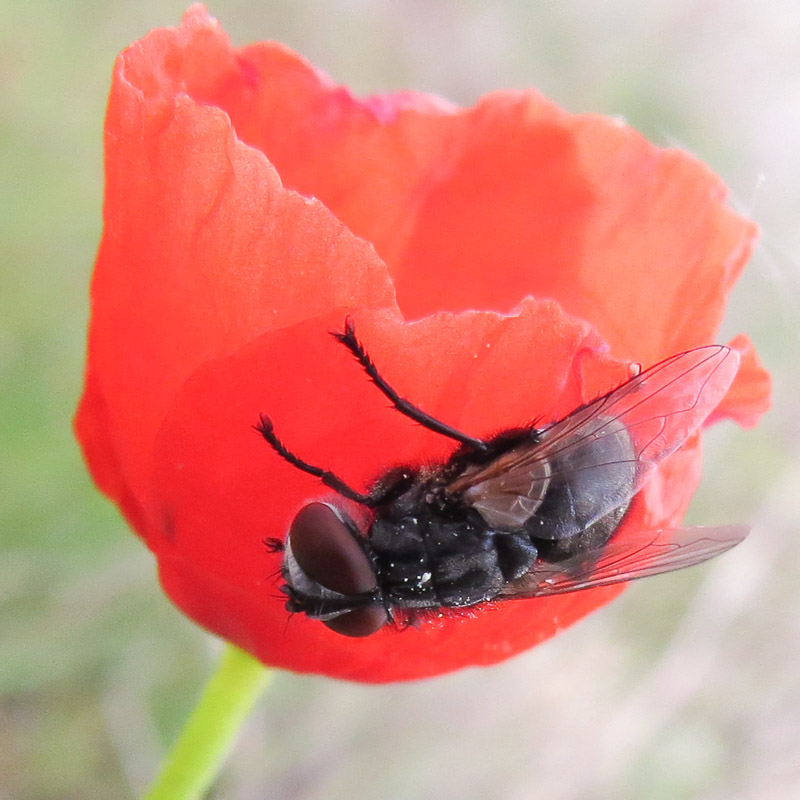 [143.04Kb] Manuel |
|
|
|
| ChrisR |
Posted on 24-05-2013 18:56
|
|
Super Administrator Location: Reading, England Posts: 7703 Joined: 12.07.04 |
Hmm, it's not an easy one - I might leave it for the other experts 
Manager of the UK Species Inventory in the Angela Marmont Centre for UK Biodiversity at the Natural History Museum, London. |
| Zeegers |
Posted on 24-05-2013 19:36
|
|
Member Location: Soest, NL Posts: 19023 Joined: 21.07.04 |
i would be surprised if it is not in Phasiinae. But then... Other than a melanistic form (of Clytiomyia ??), which is unlikely and never seen by me, I'm lost. Theo |
|
|
|
| ChrisR |
Posted on 24-05-2013 20:39
|
|
Super Administrator Location: Reading, England Posts: 7703 Joined: 12.07.04 |
Yeah, this is a classic example of something that should have a pin through it 
Manager of the UK Species Inventory in the Angela Marmont Centre for UK Biodiversity at the Natural History Museum, London. |
| Gerard Pennards |
Posted on 24-05-2013 21:45
|
|
Member Location: Amersfoort Posts: 1914 Joined: 07.06.04 |
Are we sure it is a Tachinid?? You can laugh about it, but wing venation and general appearance reminds me a bit of Graphomya.....
Greetings, Gerard Pennards |
|
|
|
| John Carr |
Posted on 27-05-2013 01:13
|
|
Super Administrator Location: Massachusetts, USA Posts: 10424 Joined: 22.10.10 |
Gerard Pennards wrote: Are we sure it is a Tachinid?? You can laugh about it, but wing venation and general appearance reminds me a bit of Graphomya..... Almost all Muscidae would have stronger, differentiated dorsocentral bristles and usually at least one pair of differentiated acrostichals. Vein M is rarely so strongly bent (in some Muscini but not Graphomya). I think I see a subscutellum too. |
| Jaakko |
Posted on 28-05-2013 11:11
|
|
Member Location: Joensuu, Finland Posts: 479 Joined: 04.08.08 |
Xysta holosericea? Female Clytiomyia are quite dark too, but this is a male(?). Jaakko |
|
|
|
| Zeegers |
Posted on 28-05-2013 16:54
|
|
Member Location: Soest, NL Posts: 19023 Joined: 21.07.04 |
It crossed my mind. I never saw the female, though, so I cannot comment. Theo |
|
|
|
| John Carr |
Posted on 28-05-2013 17:09
|
|
Super Administrator Location: Massachusetts, USA Posts: 10424 Joined: 22.10.10 |
Jaakko wrote: Xysta holosericea? Female Clytiomyia are quite dark too, but this is a male(?). Jaakko If you are going by the narrowly separated eyes, in Phasia females can have more narrowly separated eyes than males and perhaps that is true of related genera. I can't tell by the shape of the abdomen. |
| Zeegers |
Posted on 28-05-2013 18:22
|
|
Member Location: Soest, NL Posts: 19023 Joined: 21.07.04 |
This is the male http://www.dipter...d_id=54506 rather different (but coulld be sexual dimorphism) Theo Edited by ChrisR on 28-05-2013 18:46 |
|
|
|
| Zeegers |
Posted on 28-05-2013 18:34
|
|
Member Location: Soest, NL Posts: 19023 Joined: 21.07.04 |
If you look at the picture on www.tachinidae.eu, also in the female sex of Xysta the genitalia are enlarged and asymmetrical. So that does not fit. Howver, Opesia might be a candidate Do you have Opesia in Spain ? Theo |
|
|
|
| Manuel Lopez |
Posted on 28-05-2013 18:41
|
|
Member Location: Granada Posts: 2551 Joined: 03.09.11 |
Yes, Opesia cana and O. descendens are described in Spain.
Manuel |
|
|
|
| ChrisR |
Posted on 28-05-2013 18:50
|
|
Super Administrator Location: Reading, England Posts: 7703 Joined: 12.07.04 |
The more I look at it, the more I find myself quite taken by the idea tat it is a female Opesia cana ... they are so rare though that we'd all be forgiven for not instantly recognising it 
Manager of the UK Species Inventory in the Angela Marmont Centre for UK Biodiversity at the Natural History Museum, London. |
| Zeegers |
Posted on 28-05-2013 19:31
|
|
Member Location: Soest, NL Posts: 19023 Joined: 21.07.04 |
Chris, with this absolution you'd make a great Pope. Thank you Theo |
|
|
|
| ChrisR |
Posted on 28-05-2013 19:45
|
|
Super Administrator Location: Reading, England Posts: 7703 Joined: 12.07.04 |
Thanks Theo - I am just well-practiced when it comes to explaining my own inadequacies!  The irony is that Opesia are some of my favourite tachinids - their clean lines and rarity go some way to explaining my fascination in them ... but just getting a chance to see one is a rare treat indeed! Edited by ChrisR on 28-05-2013 19:45 Manager of the UK Species Inventory in the Angela Marmont Centre for UK Biodiversity at the Natural History Museum, London. |
| Zeegers |
Posted on 28-05-2013 20:30
|
|
Member Location: Soest, NL Posts: 19023 Joined: 21.07.04 |
Stick to Mintho ! |
|
|
|
| Manuel Lopez |
Posted on 28-05-2013 20:46
|
|
Member Location: Granada Posts: 2551 Joined: 03.09.11 |
Thanks all !! Very interesting for me 
Manuel |
|
|
|
| Jump to Forum: |


